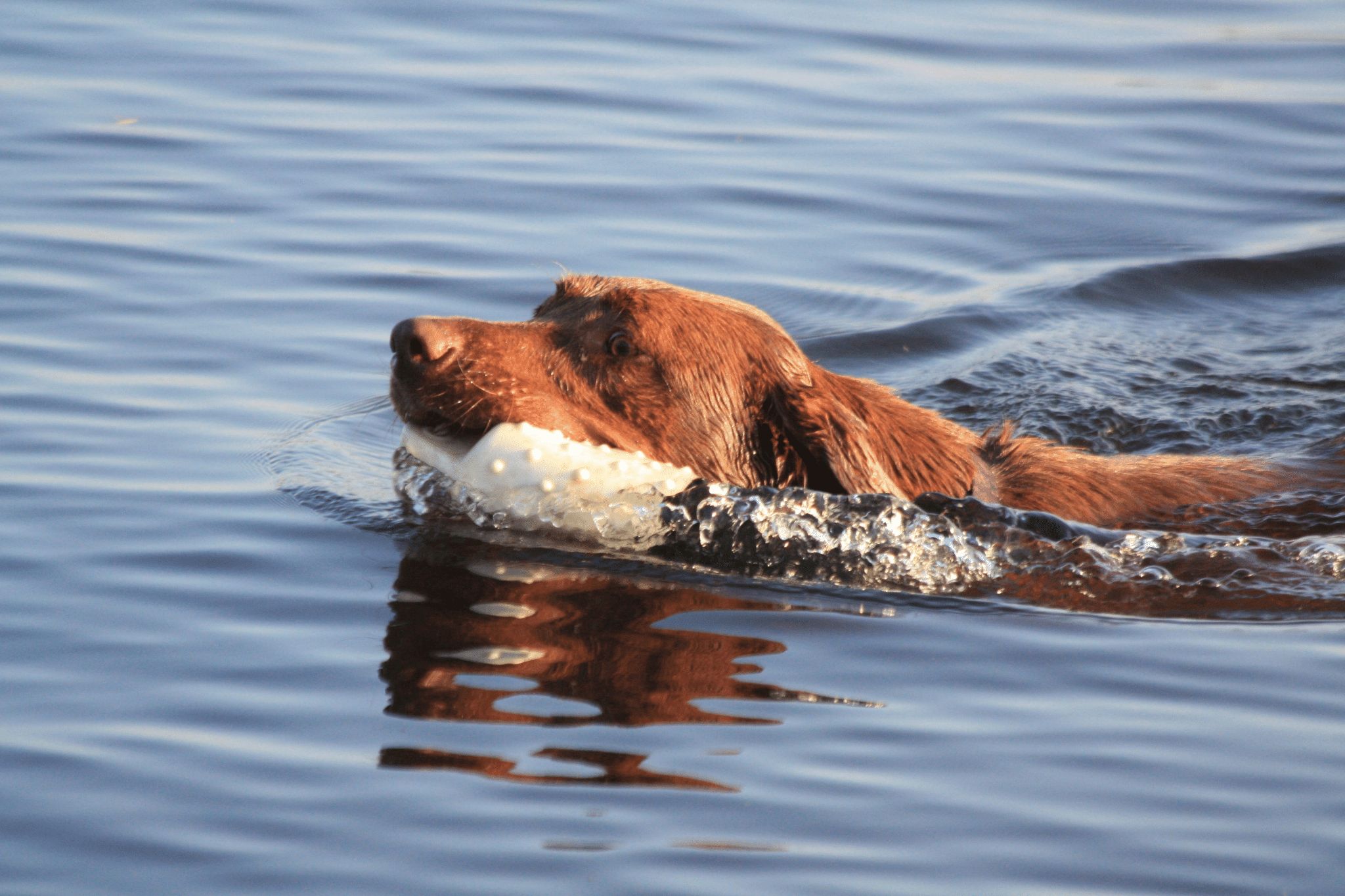Training your Dog for Waterfowl Retrieval

Training your Dog for Waterfowl Retrieval
The love of water plus the love of retrieving doesn’t make a duck dog. They need to love being steady, or at least act like they love it. An impatient, fidgeting dog will stand out to a team of ducks making their initial buzz by your spread of decoys. If you want a solid waterfowl dog, you cannot overlook your dog having a solid foundation as a part of the equation.
Foundation First
We need to focus on steadiness. The first step I like to take starts at the food bowl. I begin by holding my pup as I put their bowl on the ground. If they are squirming, I hold them until they stop. If they aren’t squirming, I sit them in front of the bowl and count to three and then release them. As they gain steadiness, I increase the amount of time and/or distance before releasing them. I continue to practice until I know I can walk away from my dog and they remain sitting, until I release them to eat. One thing that remains is my expectation that they don’t eat until I release them.
Another great opportunity to practice steadiness is on place. Starting with a pup, I teach them to stay on place and settle in. Once they start to obey “place” and are steady, I begin adding distractions like: the length of time they are on place, people walking near them, tossing bumpers over their head, walking another dog by them, etc. Distractions like this help us transition to “place” on a water’s edge with multiple gunners, decoys, calls, live birds and gun shot. Before we make the jump from “place” to the hunt, we should move the “place” drills to the water’s edge and incorporate some of those distractions. Once we see them consistently stay steady through these drills, we are ready for their steadiness to move from training to hunting.
Duck Dogs Need To Swim
Most dogs enjoy playing in water. I’ve found that once a dog feels comfortable in the water, the simplest way to keep them swimming is the reward of a retrieve. Once my dogs consistently retrieve a bumper from 10, 20, 30 yards, I feel like I have something to work with on the water. As we build up to blind retrieves, memory retrieves and trailing memory retrieves on land, we’ll see those drills help us transition into search work and blind retrieves on the water.
Let’s face it, we aren’t going to kill 100% of our ducks 100% of the time. Not to mention, even when we kill a duck, it’s not always going to land in plain sight. So, our dogs need to be willing to search for the wounded or harvested game until they find it our we call them off. Plus, we need to be able to handle them on a blind retrieve.
Getting your Dog used to Water
The incremental retrieving work we do on land transitions well to the water. I recommend you start with land retrieves before you move to the water. Your pup’s first retrieves will likely be when they are 8 to 10 weeks old. If your pup struggles to have a clean retrieve and/or a consistent retrieve, I recommend that you walk them through hold conditioning to help them clearly understand the complete picture of the retrieve.
One of the best ways I’ve found to help my pups learn to love water is by holding and carrying them into the water with me. With a puppy, this doesn’t require us to get fully submerged. Once my pup is confident in the water and seemingly playful, I start throwing bumpers 2, 3, 5 yards into the water. Typically, after a few sessions of short tosses, my pups are ready to go for longer retrieves at 10, 20, 30 yards.
Lastly, if you’re planning to train your pup to be a duck dog, I recommend having: a place/bed, bumpers (I prefer firehose/canvas bumpers), blank pistol, decoys, duck calls and bird scent.
by Kyle Dana
July 2024
Check out another of our Gundog Corner Articles
Here is the Digital version of the July issue of the Iowa Sportsman
Or if you were looking for our cattle/dairy side of things

